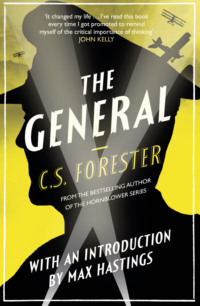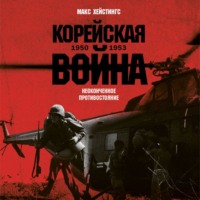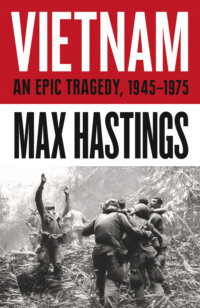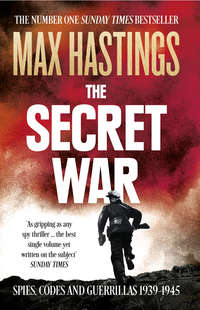
Полная версия
All Hell Let Loose: The World at War 1939-1945

Max Hastings
All Hell Let Loose
The World at War 1939–45

Copyright
WilliamCollins
An imprint of HarperCollinsPublishers Ltd.
1 London Bridge Street
London SE1 9GF
www.WilliamCollinsBooks.co.uk
First published in Great Britain by HarperPress in 2011
ALL HELL LET LOOSE. Copyright © Max Hastings 2011. All rights reserved under International and Pan-American Copyright Conventions. By payment of the required fees, you have been granted the nonexclusive, nontransferable right to access and read the text of this e-book on-screen. No part of this text may be reproduced, transmitted, downloaded, decompiled, reverse-engineered, or stored in or introduced into any information storage and retrieval system, in any form or by any means, whether electronic or mechanical, now known or hereinafter invented, without the express written permission of HarperCollins e-books.
Max Hastings asserts the moral right to be identified as the author of this work
A catalogue record for this book
is available from the British Library
HarperCollinsPublishers has made every reasonable effort to ensure that any picture content and written content in this ebook has been included or removed in accordance with the contractual and technological constraints in operation at the time of publication
Source ISBN: 9780007338092
Ebook Edition © AUGUST 2011 ISBN: 9780007338122
Version: 2018-07-17
Dedication
TO MICHAEL SISSONS,
for thirty years a princely agent,
counsellor and friend
Contents
Cover
Title Page
Copyright
Dedication
List of Maps
Introduction
1 Poland Betrayed
2 No Peace, Little War
3 Blitzkriegs in the West
1 Norway
2 The Fall of France
4 Britain Alone
5 The Mediterranean
1 Mussolini Gambles
2 A Greek Tragedy
3 Sandstorms
6 Barbarossa
7 Moscow Saved, Leningrad Starved
8 America Embattled
9 Japan’s Season of Triumph
1 ‘I Suppose you’ll Shove the Little Men Off’
2 The ‘White Route’ from Burma
10 Swings of Fortune
1 Bataan
2 The Coral Sea and Midway
3 Guadalcanal and New Guinea
11 The British at Sea
1 The Atlantic
2 Arctic Convoys
3 The Ordeal of Pedestal
12 The Furnace: Russia in 1942
13 Living with War
1 Warriors
2 Home Fronts
3 A Woman’s Place
14 Out of Africa
15 The Bear Turns: Russia in 1943
16 Divided Empires
1 Whose Liberty?
2 The Raj: Unfinest hour
17 Asian Fronts
1 China
2 Jungle-Bashing and Island-Hopping
18 Italy: High Hopes, Sour Fruits
1 Sicily
2 The Road to Rome
3 Yugoslavia
19 War in the Sky
1 Bombers
2 Targets
20 Victims
1 Masters and Slaves
2 Killing Jews
21 Europe Becomes a Battlefield
22 Japan: Defying Fate
23 Germany Besieged
24 The Fall of the Third Reich
1 Budapest: In the Eye of the Storm
2 Eisenhower’s Advance to the Elbe
3 Berlin: The Last Battle
25 Japan Prostrate
26 Victors and Vanquished
Picture Section
Notes and References
Bibliography
Searchable Terms
Acknowledgements
Other Books by Max Hastings
About the Publisher
Maps
The Polish Campaign
The Finnish Campaign
The Invasion of Norway
The Last Phase of the 1940 French Campaign
The Invasion of Greece
The German Winter Offensives 1941
The Pacific Theatre
The Battle of the Coral Sea
The Battle of Midway
The Russians Encircle Hitler’s Sixth Army
The 1942–43 Advance of Eighth Army
The Russians Exploit Victory at Kursk
Russian Advances Across Ukraine
The 1943 Landings in Italy
The 1944 Thrust into Poland
The Allied Breakout from Normandy
The 1944 Allied Advances on Germany
The 1945 Western Drive into Germany
The Russian Drive to the Oder
The Final Russian Assaults
Introduction
This is a book chiefly about human experience. Men and women from scores of nations struggled to find words to describe what happened to them in the Second World War, which transcended anything they had ever known. Many resorted to a cliché: ‘All hell broke loose.’ Because the phrase is commonplace in eyewitness descriptions of battles, air raids, massacres and ship sinkings, later generations are tempted to shrug at its banality. Yet in an important sense the words capture the essence of what the struggle meant to hundreds of millions of people, plucked from peaceful, ordered existences to face ordeals that in many cases lasted for years, and for at least sixty millions were terminated by death. An average of 27,000 people perished each day between September 1939 and August 1945 as a consequence of the global conflict. Some survivors found that the manner in which they had conducted themselves during the struggle defined their standing in their societies for the rest of their lives, for good or ill. Successful warriors retained a lustre which enabled some to prosper in government or commerce. Conversely, at the bar of a London club thirty years after the war, a Guards veteran murmured about a prominent Conservative statesman: ‘Not a bad fellow, Smith. Such a pity he ran away in the war.’ A Dutch girl, growing up in the 1950s, found that her parents categorised each of their neighbours in accordance with how they had behaved during the German occupation of Holland.
British and American infantrymen were appalled by their experiences in the 1944–45 north-west Europe campaign, which lasted eleven months. But Russians and Germans fought each other continuously for almost four years in far worse conditions, and with vastly heavier casualties.* Some nations which played only a marginal military role lost many more people than the Western Allies: China’s ordeal at Japanese hands between 1937 and 1945 cost at least fifteen million lives; Yugoslavia, where civil war was overlaid on Axis occupation, lost more than a million dead. Many people witnessed spectacles comparable with Renaissance painters’ conception of the inferno to which the damned were consigned: human beings torn to fragments of flesh and bone; cities blasted into rubble; ordered communities sundered into dispersed human particles. Almost everything which civilised peoples take for granted in time of peace was swept aside, above all the expectation of being protected from violence.
It is impossible to detail within a single volume the vastness of the war, the largest event in human history. I have already described aspects of it in eight books, most significantly Bomber Command, Overlord, Armageddon, Nemesis and Finest Years. While any work such as this should be self-contained, I have striven to avoid repetition of either anecdotage or analysis of large issues. For instance, having devoted an entire chapter of Nemesis to the 1945 dropping of the atomic bombs on Hiroshima and Nagasaki, it seems fruitless to revisit my own arguments. This book sustains a chronological framework, and seeks to establish and reflect upon the ‘big picture’, the context of events: the reader should gain a broad sense of what happened to the world between 1939 and 1945. But its principal purpose is to illuminate the conflict’s significance for a host of ordinary people of many societies, both active and passive participants – though the distinction is often blurred. Was, for example, a Hamburg woman who ardently supported Hitler, but perished in the July 1943 firestorm generated by Allied bombing, an accomplice to Nazi war guilt, or the innocent victim of an atrocity?
In my pursuit of the human story, wherever possible without losing coherence my narrative omits unit identifications and details of battlefield manoeuvres. I have tried to create a global portrait: the strategic narrative emphasises aspects of the conflict which I have not examined elsewhere, and about which there seems more to be said – for instance, India’s experience – at the expense of others which have been exhaustively explored, such as Pearl Harbor and the battle for Normandy.
The Jewish genocide became the most coherent fulfilment of Nazi ideology. I wrote in Armageddon about the ordeal of concentration-camp prisoners, and have here instead addressed the evolution of the Holocaust from a Nazi perspective. So widespread is a modern Western perception that the war was fought about Jews, that it should be emphasised this was not the case. Though Hitler and his followers chose to blame the Jews for the troubles of Europe and the grievances of the Third Reich, Germany’s struggle with the Allies was about power and hemispheric dominance. The plight of the Jewish people under Nazi occupation loomed relatively small in the wartime perceptions of Churchill and Roosevelt, and less surprisingly in that of Stalin. About one-seventh of all fatal victims of Nazism, and almost one-tenth of all wartime dead, ultimately proved to have been Jews. But at the time their persecution was viewed by the Allies merely as one fragment of the collateral damage caused by Hitler, as indeed Russians still see the Holocaust today. The limited attention paid to the Jewish predicament by the wartime Allies was a source of frustration and anger to informed co-religionists at the time, and has prompted powerful indignation since. But it is important to recognise that between 1939 and 1945 the Allied nations saw the struggle overwhelmingly in terms of the threat posed by the Axis to their own interests, though Churchill defined these in generous and noble terms.
One of the most important truths about the war, as indeed about all human affairs, is that people can interpret what happens to them only in the context of their own circumstances. The fact that, objectively and statistically, the sufferings of some individuals were less terrible than those of others elsewhere in the world was meaningless to those concerned. It would have seemed monstrous to a British or American soldier facing a mortar barrage, with his comrades dying around him, to be told that Russian casualties were many times greater. It would have been insulting to invite a hungry Frenchman, or even an English housewife weary of the monotony of rations, to consider that in besieged Leningrad starving people were eating each other, while in West Bengal they were selling their daughters. Few people who endured the Luftwaffe’s 1940–41 blitz on London would have been comforted by knowledge that the German and Japanese peoples would later face losses from Allied bombing many times greater, together with unparalleled devastation. It is the duty and privilege of historians to deploy relativism in a fashion that cannot be expected of contemporary participants. Almost everyone who participated in the war suffered in some degree: the varied scale and disparate nature of their experiences are themes of this book. But the fact that the plight of other people was worse than one’s own did little to promote personal stoicism.
Some aspects of wartime experience were almost universal: fear and grief; the conscription of young men and women obliged to endure new existences utterly remote from those of their choice, often under arms and at worst as slaves. A boom in prostitution was a tragic global phenomenon which deserves a book of its own. The conflict provoked many mass migrations. Some of these were orderly: half the population of Britain moved home in the course of the war, and many Americans took new jobs in unfamiliar places. Elsewhere, however, millions were wrenched from their communities in dreadful circumstances, and faced ordeals which often killed them. ‘These are strange times,’ wrote an anonymous Berlin woman on 22 April 1945 in one of the great diaries of the war, ‘history experienced first hand, the stuff of tales yet untold and songs unsung. But seen close-up, history is much more troublesome – nothing but burdens and fears. Tomorrow I’ll go and look for nettles and get some coal.’
The nature of battlefield experience varied from nation to nation, service to service. Within armies, riflemen experienced far higher levels of risk and hardship than millions of support troops. The US armed forces suffered an overall death rate of just five per thousand men enlisted; the vast majority of those who served faced perils no greater than those of ordinary civilian life. While 17,000 American combat casualties lost limbs, during the war years 100,000 workers at home became amputees as a result of industrial accidents. Men who found themselves on battlefields when their nations were in retreat suffered more heavily than others who served in times of victories; Allied warriors who saw action only in 1944– 45 had a far better statistical prospect of survival than, say, aircrew or submariners who began operational service earlier, when their cause was faring badly.
My story emphasises bottom-up views and experiences, the voices of little people rather than big ones; I have written extensively elsewhere about the warlords of 1939–45. Contemporary diaries and letters record what people did or what was done to them, but often tell us little about what they thought; the latter is more interesting, but more elusive. The obvious explanation is that most warriors are young and immature: they experience extremes of excitement, terror or hardship, but only a small minority have the emotional energy for reflection, because they are absorbed in their immediate physical surroundings, needs and desires.
It was fundamental that only a tiny number of national leaders and commanders knew much about anything beyond their immediate line of sight. Civilians existed in a fog of propaganda and uncertainty, scarcely less dense in Britain and the US than in Germany or Russia. Front-line combatants assessed the success or failure of their side chiefly through counting casualties and noticing whether they were moving forwards or backwards. These were, however, sometimes inadequate indicators: Pfc Eric Diller’s battalion was cut off from the main American army for seventeen days during the Leyte campaign in the Philippines, but he realised the seriousness of his unit’s predicament only when this was explained to him by his company commander after the war.
Even those with privileged access to secrets were confined to their own fragments of knowledge in a vast jigsaw puzzle. For instance Roy Jenkins, who later became a British statesman, decrypted German signals at Bletchley Park. He and his colleagues knew the importance and urgency of the work they were doing, but, contrary to the impression given in sensational films about Bletchley, they were told nothing about the significance or impact of their contributions. Such constraints were greater, unsurprisingly, on the other side of the hill: in January 1942 Hitler became convinced that too many people in Berlin knew too much. He decreed that even officials of the Abwehr should receive only such information as was necessary for their own work. They were forbidden to monitor enemy broadcasts, a considerable handicap for an intelligence service.
I am fascinated by the complex interplay of loyalties and sympathies around the world. In Britain and America, confidence that our parents and grandparents were fighting ‘the good war’ is so deeply ingrained that we often forget that people in many countries adopted more equivocal attitudes: colonial subjects, and above all India’s four hundred millions, saw little merit in the defeat of the Axis if they continued to endure British suzerainty. Many Frenchmen fought vigorously against the Allies. In Yugoslavia, rival factions were far more strongly committed to waging civil war against each other than to advancing the interests of either the Allies or the Axis. Large numbers of Stalin’s subjects embraced the opportunity offered by German occupation to take up arms against a hated Moscow regime. None of this implies doubt that the Allied cause deserved to triumph, but it should emphasise the fact that Churchill and Roosevelt did not have all the best tunes.
It may be useful to explain how this book was written. I began by rereading Gerhard Weinburg’s A World at Arms and Total War by Peter Calvocoressi, Guy Wint and John Pritchard, probably the two best single-volume histories of the war. I then composed a skeleton narrative, setting the most important events in sequence, and laid upon it the flesh of anecdotage and my own reflections. When I had completed a draft, I revisited some other outstanding recent accounts of the conflict: Richard Overy’s Why the Allies Won, Allan Millett and Williamson Murray’s There’s a War to be Won and Michael Burleigh’s Moral Combat. I thus reviewed my own comments and conclusions in the light of theirs.
Wherever possible, I have favoured relatively obscure anecdotage at the expense of justly celebrated personal recollections – omitting, for instance, the likes of Richard Hillary’s The Last Enemy and George Macdonald Fraser’s Quartered Safe out Here. Dr Lyuba Vinogradova, who has researched my Russian material for the past decade, for this work once again identified and translated personal narratives, diaries and letters. Serena Sissons has translated thousands of words from Italian memoirs and diaries, because Mussolini’s people seem to me inadequately represented in most Anglo-Saxon narratives. I have explored unpublished Polish accounts in the Imperial War Museum archive and London’s Sikorski Institute. I am once again indebted to Dr Tami Biddle of the US Army War College at Carlisle, Pennsylvania, for insights and documents derived from her own researches, which she has generously shared with me. Various friends, notable among them Professor Sir Michael Howard, Dr Williamson Murray and Don Berry, have been kind enough to read my draft manuscript and make invaluable corrections, suggestions and comments. The doyen of British naval historians, Professor Nicholas Rodger of All Souls College, Oxford, read the chapter on the British experience at sea, much to the advantage of my final text. Richard Frank, doyen of US Pacific historians, identified an alarming catalogue of egregious mistakes in my draft, for which I am deeply grateful. None of these, of course, bears any responsibility for my judgements and errors.
Any writer’s highest aspiration, more than sixty-five years after the war’s ending, is to offer a personal view rather than a comprehensive account of this greatest and most terrible of all human experiences, which never fails to inspire humility in its modern students, inspired by gratitude that we have been spared anything comparable. In 1920, when Colonel Charles à Court Repington, military correspondent of the Daily Telegraph, published a best-selling account of the recent conflict, it was considered sinister and tasteless that he chose as his title The First World War, for it presumed another. To call this book The Last World War might tempt providence, but it is at least certain that never again will millions of armed men clash on European battlefields such as those of 1939–45. The conflicts of the future will be quite different, and it may not be rashly optimistic to suggest that they will be less terrible.
MAX HASTINGS
Chilton Foliat, Berkshire, and Kamogi, Kenya, June 2011
1
Poland Betrayed
While Adolf Hitler was determined to wage war, it was no more inevitable that his 1939 invasion of Poland precipitated global conflict than that the assassination of the Archduke Franz Ferdinand of Austria did so in 1914. Britain and France lacked both the will and the means to take effective action towards fulfilment of security guarantees they had given earlier to the Poles. Their declarations of war on Germany were gestures which even some staunch anti-Nazis thought foolish, because futile. For every eventual belligerent save the Poles themselves, the struggle began slowly: only in its third year did global death and destruction attain the vastness sustained thereafter until 1945. Even Hitler’s Reich was at first ill-equipped to generate the intensity of violence demanded by a death grapple between the most powerful nations on earth.
During the summer of 1939 Gone with the Wind, Margaret Mitchell’s novel of the old American South, enjoyed a surge of popularity in Poland. ‘Somehow, I considered it prophetic,’ wrote one of its Polish readers, Rula Langer. Few of her compatriots doubted that a conflict with Germany was imminent, because Hitler had made plain his commitment to conquest. Poland’s fiercely nationalistic people responded to the Nazi threat with the same spirit as the doomed young men of the Confederacy in 1861. ‘Like most of us, I believed in happy endings,’ a young fighter pilot recalled. ‘We wanted to fight, it excited us, and we wanted it to happen fast. We didn’t believe that something bad could really happen.’ When artillery lieutenant Jan Karski received his mobilisation order on 24 August, his sister warned him against burdening himself with too many clothes. ‘You aren’t going to Siberia,’ she said. ‘We’ll have you on our hands again within a month.’
The Poles paraded their propensity for fantasy. There was an exuberance in the café and bar chatter of Warsaw, a city whose baroque beauties and twenty-five theatres caused citizens to proclaim it ‘the Paris of eastern Europe’. A New York Times reporter wrote from the Polish capital: ‘To hear people talk, one might think that Poland, not Germany, was the great industrial colossus.’ Mussolini’s foreign minister, his son-in-law Count Galeazzo Ciano, warned the Polish ambassador in Rome that if his country resisted Hitler’s territorial demands, it would find itself fighting alone, and ‘would quickly be turned into a heap of ruins’. The ambassador did not dissent, but asserted vaguely that ‘some eventual success…might give Poland greater strength’. In Britain, Lord Beaverbrook’s newspapers denounced as provocative Warsaw’s defiance in the face of Hitler’s threats.
The Polish nation of thirty million, including almost one million ethnic Germans, five million Ukrainians and three million Jews, had held borders established by the Treaty of Versailles for only twenty years. Between 1919 and 1921, Poland fought the Bolsheviks to assert its independence from longstanding Russian hegemony. By 1939 the country was ruled by a military junta, though the historian Norman Davies has argued, ‘If there was hardship and injustice in Poland, there was no mass starvation or mass killing as in Russia, no resort to the bestial methods of Fascism or Stalinism.’ The ugliest manifestation of Polish nationalism was anti-Semitism, exemplified by quotas for Jewish university entry.
In the eyes of both Berlin and Moscow, the Polish state owed its existence only to Allied force majeure in 1919, and had no legitimacy. In a secret protocol of the Nazi–Soviet Pact signed on 23 August 1939, Hitler and Stalin agreed Poland’s partition and dissolution. Though the Poles viewed Russia as their historic enemy, they were oblivious of immediate Soviet designs on them, and were bent instead upon frustrating those of Germany. They knew the ill-equipped Polish army could not defeat the Wehrmacht; all their hopes were pinned upon an Anglo-French offensive in the west, which would divide Germany’s forces. ‘In view of Poland’s hopeless military situation,’ wrote its London ambassador Count Edward Raczy









